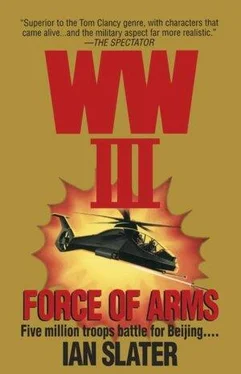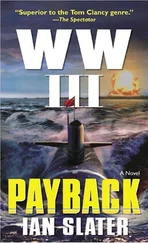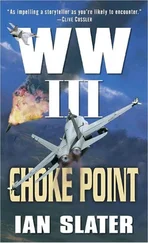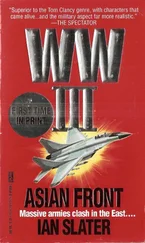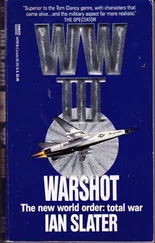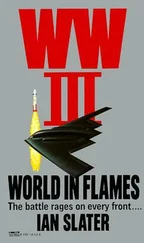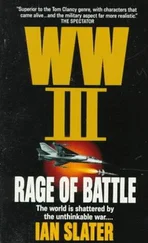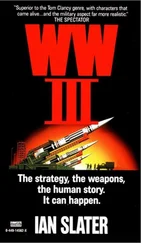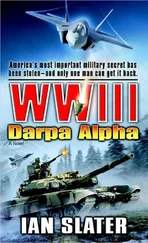With militia included, Cheng had fielded over 153,000 men against two U.S. infantry divisions: 36,100 men plus 732 M1A1 tanks. Both in numbers of men and tanks the Chinese had an advantage of almost four to one against the Americans.
Under cover of the typhoon, Chinese infantry, who, an old wives’ tale had it, didn’t fight well in the rain— particularly the militia units around Honggor — had made more headway than expected, the blinding dust and then rain degrading the laser sites on the M1s and making it possible for the militia to penetrate here and there to harass the already-overextended American supply line. Had it not been for the typhoon, U.S. TACAIR’s A-10 Thunderbolts could have inflicted grievous losses on Cheng’s troops, but grounded by the typhoon and with more than seven U.S. airstrips having been mortar bombed from the typhoon-obliterated perimeter, TACAIR was in no shape to render any assistance. The weather then had worked in the Chinese favor, or rather had been used by them as an advantage.
Tanks were often working blind until almost atop one another, with deadly close-order battle meaning that the M1A1’s overreach of at least a thousand yards meant little. What caused the most surprise among the Americans was the sheer tenacity and fitness of the PLA infantry. They traveled light compared to the Americans and knew the ground better.
Whatever the reason for their punching gaps through the American line, Freeman knew he would have to stem the flow quickly, not only because he feared pincer movements on his lines of supply north of the Orgon Tal-Honggor line, but that any general Chinese breakthrough might give pause to Admiral Lin and his Formosan forces. If, on the other hand, the Orgon Tal-Honggor line could be held, then the admiral, or rather his superiors, would see the staying power of the American Second Army and attack, making it a two-front war, not including the Lake Nam launch site, which had not let up its pounding deeper into the American sector.
At times, a warhead struck its own troops, but Cheng, with a four-to-one advantage, could afford “blue on blue”— “friendly fire.” Besides, he had resources of over half a million he could draw on almost immediately from the south who were being held there only because of the possibility of Taiwan attacking.
Again as on their drive south, Freeman’s men found the Chinese method of clearing a mine field insane and devastatingly effective, as one PLA soldier would use the bodies of his fallen comrades as stepping stones through the field until he either made it or was killed himself, in which case he became the next stepping stone. What was holding the Chinese up, however, were those M1s, which, once they ran out of ammunition, got close enough to ram the enemy, the ramming power of an M1 against a T-55 or 72 resulting in a demolition derby in which Chinese welding had much to answer for.
Second, the Americans, taking Freeman’s repeated warnings about the truce merely being a resupply device by the Chinese, had dug in as well as any marine had at Khe Sahn in the Vietnam War. And of primary importance in this were the prolific and well-dug American grenade sumps.
Under Freeman’s direct orders, all officers and NCOs down to and including section leaders were told that when they dug in they must be sure to dig what was in effect a dry moat about their feet so that the earth they stood on for firing positions was in fact a raised rectangle of earth that sloped away on all sides. It meant that when the Chinese tossed their stick grenades, which, being more offensive than defensive grenades, had more blast than shrapnel, many grenades simply rolled and/or were kicked away down the sloping firing platform into the deep grenade sump trench which contained the explosion. The worst off was any American who was wearing contact lenses, as the flash would throw up fine dirt that would sting and temporarily blind a man in the trench.
Lacking enough mobile artillery to cover such a huge front from Orgon Tal to the Manchurian-Siberian border, Cheng relied heavily on the plentiful supply of grenades for the infantry. The American grenades, however, being primarily defensive, as ordered by Freeman, were made less to stun than to spray dozens of splintered fragments acting like scythes among the Chinese who advanced en masse again against the dug-in Americans. And in more than one foxhole, the steam of urine rising in the typhoon’s cold air gave evidence of yet another marine cooling down his machine gun barrel as the Chinese kept coming from Orgon Tal. now designated the “ant heap” by those Americans of the Third Division’s Second and Sixth Infantry Battalions who had been stemming Cheng’s advance.
Now quantity was starting to tell as the American supply line, severed in more than one place, was unable to keep up with the wastage at the front. Of all that he hated most, Freeman hated giving an order to retreat. But if he was “shot through,” as Wolsey said of Thomas More, with pride, he was not profligate with his men, and if he could save one American life he would do so, as Cheng had learned from Freeman’s insistence during the truce that the Chinese hand over a lone SEAL, by the name of Smythe. Smythe was still being held in Beijing jail as a spy because he “bore no proper uniform when caught at the Nanking Bridge,” which the SEALs had blown before the truce.
With Freeman’s retreat to another line twenty miles to the northwest, Chinese poured into the gap, but here the mechanical aspect of the U.S. Army outdistanced the Chinese now overrunning the U.S.’s abandoned positions. The Americans, as Cheng well knew, loved wheels and would not go anywhere without transport, reminding Cheng of the French troops in the counterattack at Verdun in ‘14 who were driven out from Paris to the front in thousands of taxis. But Cheng did not care that so many potential American POWs had escaped. What was important to the Chinese commander was that he had won a decisive battle, forcing Second Army to yield over two thousand square miles of territory, even if, as Nie was fond of saying, the territory was fit only for Gobi Bactrian camels, who, because they were so perfectly camouflaged in the desert, had been used by the Chinese hauling up tons of supplies to the front, for even the lightly outfitted Chinese soldier needed ammunition and rice resupply to press home the fight against Freeman’s “imperialist warmongers.”
The news flashing across China and — courtesy of CNN — across the world was that a great victory by the People’s Liberation Army had been won all along the Orgon Tal-Honggor line, and the Americans were in full retreat. In the Mideast, millions took to the streets of Iraq and Iran to cheer the Chinese victory, and in the United States, antiwar protests were appearing outside the White House.
For Freeman, one of the worst blows was the discovery by the Chinese of dozens of blivets — enormous, water bedlike containers of fuel — buried at strategic points in the desert in the event of his armor — Bradleys, M1s, and armored personnel carriers — having to fall back. Much of the soil used to hide the blivets had been blown off by the typhoon, revealing bald patches of earth where a section of the blivet was visible.
The Chinese immediately set fire to them so that many of the M1s returning to what they thought was a hidden fuel depot found there raging fires going up in orange-black flames hundreds of feet high. Some of the blivets were used to refuel the PLA’s T-62s, and entire blivet dumps were ignited by the warheads from the Tibetan ICBMs. At Honggor, the U.S. Seventh Corps under General Meisen were badly mauled, caught in a Chinese outflanking movement coming up through the dunes, and over three thousand Americans were taken POW.
In the United States, talk of recalling Freeman and suing for a peace treaty was growing louder with each newscast of the withdrawing Americans. Reporters continued to get it wrong, including CNN, by repeatedly referring to army personnel carriers as tanks and creating the impression that U.S. armored losses were catastrophic, whereas the truth was that the M1s had acquitted themselves magnificently, but without gas they were merely heavily armored coffins.
Читать дальше
